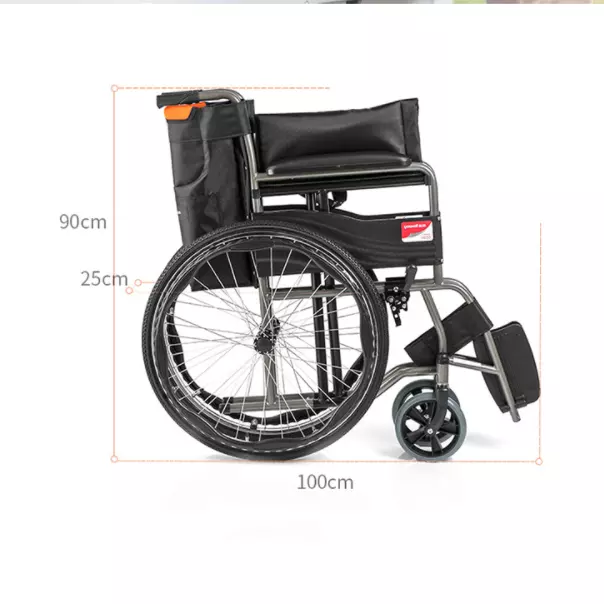Wheelchairs are widely used in the rehabilitation process of patients, such as those with lower limb disabilities, hemiplegia, sub-thoracic paraplegia, and those with limited mobility. So, do you have a comprehensive understanding of the selection and use of wheelchairs? The following Tebang manual wheelchair manufacturer to share with you the use of wheelchair knowledge!
Selection of ordinary wheelchairs:
1. Seat width
Measure the distance between the two hips or between the two shares when sitting down, plus 5cm, that is, 2.5cm gap on each side after sitting down. The seat is too narrow, it is more difficult to get in and out of the wheelchair, and the hip and thigh tissue are compressed; the seat is too wide, it is not easy to sit firmly, it is not convenient to manipulate the wheelchair, both upper limbs are easily fatigued, and there are difficulties in entering and leaving the door.
2. Seat length

Measure the horizontal distance between the rear hip and calf gastrocnemius muscle when sitting down, and subtract 6.5cm from the measurement. if the seat is too short, the weight mainly falls on the sit bones, and the local pressure is too easy; if the seat is too long, it will compress the rouge fossa, affect the local blood circulation, and easily stimulate the skin of the part. for patients with particularly short thighs or hip and knee flexion contracture, it is better to use a short seat.
3. Seat height
Measure the distance from the heel (or the heel of the shoe) to the rouge fossa when sitting down, plus 4cm, and when placing the footrest, the plate surface is at least 5cm above the ground. seat is too high, the wheelchair can not enter the table; seat is too low, the sit bones bear too much weight.
4. Seat cushion
In order to be comfortable and prevent pressure sores, seat cushions should be placed on the seat, and foam rubber (5~10cm thick) or gel cushions can be used. To prevent the seat from sinking can be placed under the seat cushion a 0.6cm thick plywood.
5. Backrest height
The higher the backrest, the more stable, the lower the backrest, the greater the range of motion of the upper body and upper limbs. The so-called low backrest, is to measure the distance from the seat surface to the armpit (an arm or two arms forward flat), subtract 10cm from this result. high backrest: measure the actual height of the seat surface to the shoulder or back pillow.
6. Hand height
When sitting, upper arm vertical, forearm flat on the armrest, measure the height of the chair surface to the lower edge of the forearm, plus 2.5cm. proper armrest height helps maintain proper body posture and balance, and allows the upper extremity to be placed in a comfortable position. Armrests are too high, the upper arm is forced to lift up, easy to feel fatigue. Handrails are too low, it requires the upper body to lean forward to maintain balance, not only easy fatigue, may also affect breathing.
